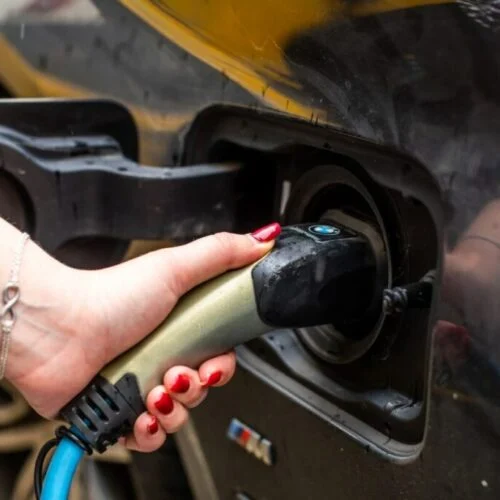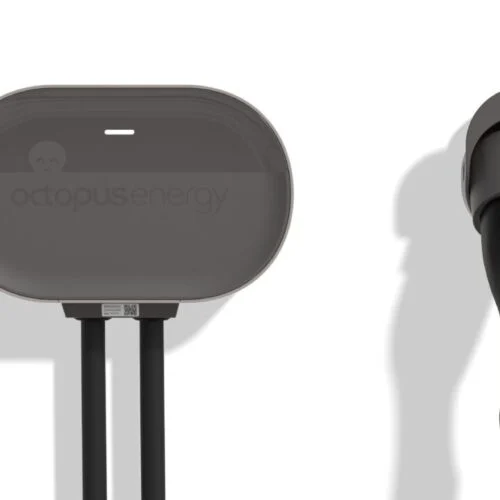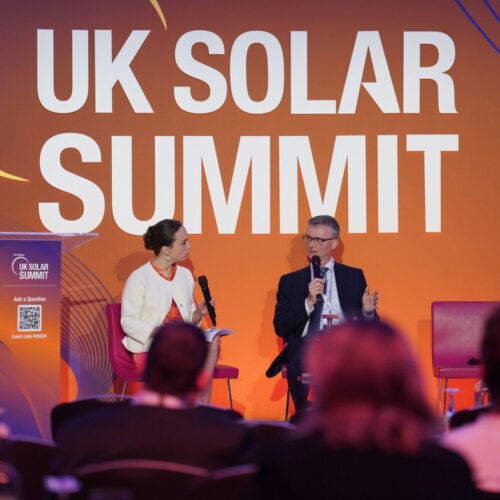Electric vehicles (EVs) have undergone a major transition throughout the last decade and have become well-established in the UK vehicle market.
In November 2023, the Society of Motor Manufacturers and Traders (SMMT) revealed the UK EV market had now left the ‘early-adopter’ stage and has now entered a new phase, with over 800,000 EVs registered since 2018.
The UK EV market also saw a regulatory success with the newly established zero emission vehicle (ZEV) mandate, which came into force on the 3 January 2024. The finalised mandate requires 80% of new cars and 70% of new vans sold in Britain to be zero emission by 2030, with all vehicles being electric by 2035.
Recognising the monumental growth of the UK’s EV charging network, Current± sat down with Charlie Jardine, CEO of EO Charging, as the EV charging solution provider celebrates its tenth birthday this year.
Reflecting on the past decade, Jardine discusses the successes of the UK EV industry, opportunities present within the fleet charging space, and what the future holds for EV smart charging.
EO Charging is turning ten years old this year, how has the company and its offering evolved during this time?
We started with a mission to reduce reliance of fossil fuels and created a charging solution to address the EV Charging needs of consumers and businesses. Our ambition was to improve the charging experience for consumers and fleet customers through brilliantly designed products and a great service experience. As the EV market has taken off and transformed, we’ve evolved our focus beyond hardware and expand our services to offer a full turnkey EV charging solution to fleets of cars, vans, trucks, and buses.
Today, our engineering team is developing our software platform and some of the hardware in-house. We deliver everything across the electrification journey, including design, construction, hardware, and software, and ongoing service and maintenance.
In Europe, we’ve proudly operated charging infrastructure for leaders like Amazon, DHL, UPS, and supermarkets like Tesco, Sainsbury’s, and Ocado over the past few years. We also work on transport electrification projects such as bus operators such as Go-Ahead Group and Stagecoach in the UK. We’re still headquartered in the UK, but support fleet electrification globally and deliver for customers across nine countries in Europe whilst also expanding in North America.
How has the UK EV charging market progressed during this past decade, what challenges have been solved and which remain?
Without a doubt, EVs have gone from being a passion project for early technology adopters to the mainstream. Electrification is a movement playing a central role in public policy and business strategies.
Against this backdrop, we’ve seen a growing appreciation amongst fleet customers and consumers of the benefits to be gained from transitioning to EV. The availability and choice of vehicles has been improving too. All of the major car and van manufacturers have a credible EV proposition, with some introducing their second or third generation models that offer improved performance and range.
Truck and bus manufacturers have been slower to adapt, but the pace of technology development and vehicle availability is also picking up in this segment. The bus market is growing massively right now, with a perfect storm of consumer demand for clean cities and legislation forcing operators to decarbonise their fleets, particularly in towns and cities.
There’s no doubt affordability remains a challenge in accelerating the adoption of EVs in the UK. High interest rates may have made them feel less affordable in the short term for middle-income consumers. On the fleet side, in an environment where business costs have been rising and growth is hard to come by, the scale and cost of fleet electrification still present a barrier for many.
The UK’s commitment to a government-set deadline for phasing out the sales of petrol and diesel vehicles has been a crucial driver for EV adoption. So, the decision to push back this deadline to 2035 was disappointing. On the more positive front, the government has committed to adopting the Winser Review proposals. This will significantly reduce connection delays for major EV infrastructure projects, a major bonus for fleet customers needing a grid upgrade to fulfil their net zero ambitions.
What impact will the introduction of the ZEV mandate have – has the ICE vehicle sale ban affected EO Charging’s business approach?
The ZEV mandate came into force this January, but we’re disappointed that it’s based on less ambitious timescales than had previously been proposed. However, we don’t see this holding back EV adoption at all. The reality is that consumers are demanding sustainable solutions and EV manufacturers have been working hard to make EV vehicles more affordable, energy companies are launching incentive programmes to reduce electricity costs and fossil fuel costs high so despite any government mandate the push to EV is inevitable.
We want to see more measures to incentivise EV adoption, and the ZEV mandate is the single most important measure to deliver net zero because road transport is a significant contributor to greenhouse gas emissions. Switching to EVs will help to reduce these significantly. Over their lifetime, EVs can cut emissions by around two-thirds on average compared with petrol equivalents.
What’s the biggest obstacle to EV fleets and ebuses in the UK, and how can the rollout be better supported?
The bus sector has particularly challenging electrification and net zero targets, requiring innovation in delivery and funding models for operators to achieve them. The affordability of battery electric vehicles (BEV) and associated infrastructure is a real challenge when operators face the same number of passengers and limited potential for growing revenues through fare increases.
That is why we recently introduced an as-a-service solution called MOBILITe that provides bus operators with everything they need to go electric for a fixed monthly cost. The solution makes it quicker and easier for customers to access the capital, services, and expertise they need to electrify their fleets. We expect other players to develop new models to help overcome the zero emission bus affordability challenges in the coming year.
Bus depots are becoming industrial-sized users of electricity. An average bus depot with around 100 buses looks at an annual demand of more than 9GWh; that puts pressure on local grid infrastructure. With energy being a finite resource, the cost of upgrading infrastructure is both high and is also time intensive. We see a burning need for energy management in these depots which will help to solve a lot of load management issues that bus depots are faced with, we see this being a huge focus area for the EV industry in 2024.
As businesses across transport and industry clamour for points of connection to a challenged and constrained grid, bus depots are looking increasingly promising as potential sites to help electrify other fleets. Bus operators could gain from opening up their depots to monetise their charging assets during times they would otherwise be idle, providing a new revenue stream.
With unprecedented levels of investment in electrification, I expect 2024 will be a pivotal year for picking up the momentum of infrastructure progress to enable zero emission bus fleets. Done right, it will create a shift of optimism in the market to electrify other fleets, and hopefully this will support wider adoption, contributing significantly to reducing carbon emissions.
One of the biggest accomplishments within the UK EV sector this year was surpassing the 50,000 public chargepoint milestone – what successes do you see next year and beyond for EV charging?
It’s encouraging to see progress, but there’s still a lot of work to do to make the UK public charging infrastructure fit for purpose. Coverage is still patchy in some areas of the country, and access to reliable on-the-go charging on major routes in places like motorway service areas still needs significant development.
Although public charging is still in need of further development, it isn’t holding back EV adoption, with the majority of charging actually taking place at home or at the workplace. However, improvements to managing the infrastructure to enable reliable and fast EV charging is crucial and an area we will see big developments in the coming year.
We will also see charge networks becoming more integrated with the roll out of standards such as ISO 15118 enabling an easy ‘plug and charge’ experience, this will be a key milestone in the EV industry as the technology has advanced to make the process of EV charging simple and easy for the end user.
What does the future hold for EO Charging?
EO was founded 10 years ago, and we installed some of the first chargers and software services for some of the world’s first EV pioneers in Europe. The market has now reached maturity and more sophisticated software and services are needed to support growing fleets.
We understand the challenges large, complex fleets are facing and have evolved our business starting as a hardware manufacturer to now offering a full suite of hardware, software, operations and maintenance services for full fleet electrification.
We are also focussed on growing our US presence, having opened our offices this year and expanded our team, there is a huge market opportunity for us, and we are well positioned to support bus, van and truck fleet electrification in North America.
From an EV market standpoint, the electric mobility revolution feels like it’s finally gained unstoppable momentum. With vehicle sales worldwide starting to grow due to falling costs, improving technology, and serious government support in several markets, we’ll reach a tipping point in the year ahead and see an increase in EV adoption this year.
While Europe’s a little ahead of the US, they’re all in pretty early stages relative to the opportunity. So, 2024 will be about continuing to pursue our goal of becoming the global leader in charging van, truck, and bus fleets in the depot.
The growth of our industry lies in open-source collaboration, which will be a key focus in supporting progress across the global EV sector. We’ve learned from other sectors that proprietary solutions don’t work and have already seen how the interoperability of different EV charging systems causes issues. There’s a real complexity risk without the standardisation of protocols, device management, transaction handling, security, and smart charging functionalities.
We are also anticipating a significant change in the way our customers acquire charging capability – from CAPEX outlay to ‘as-a-service’ models becoming preferable. It will be interesting to see how this develops over the next year.





